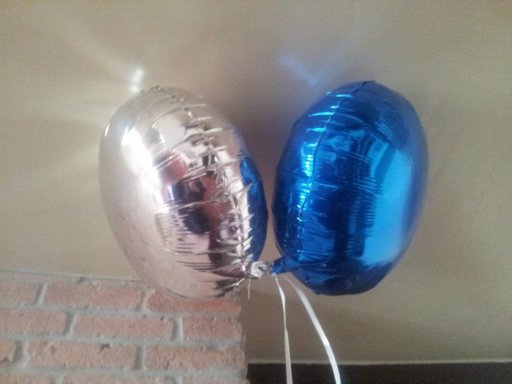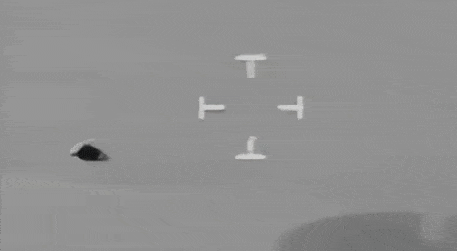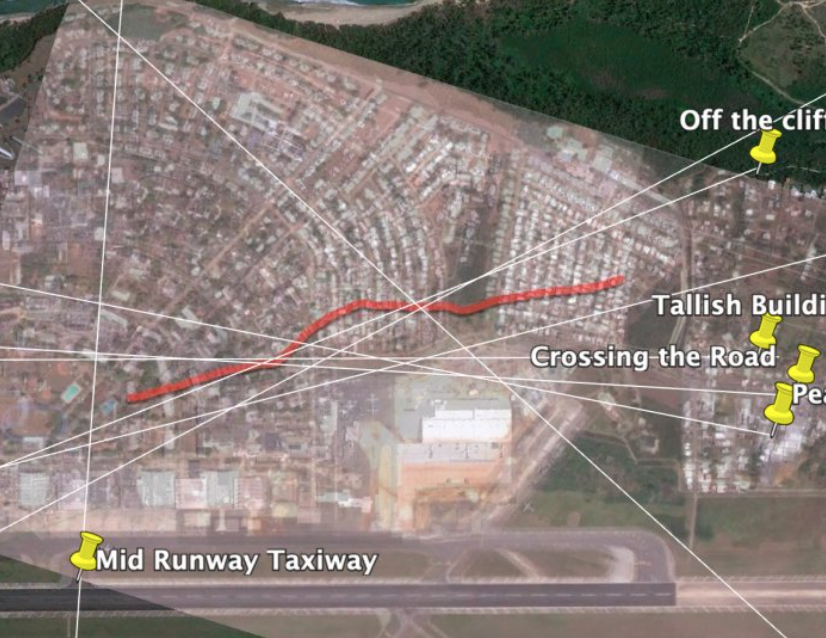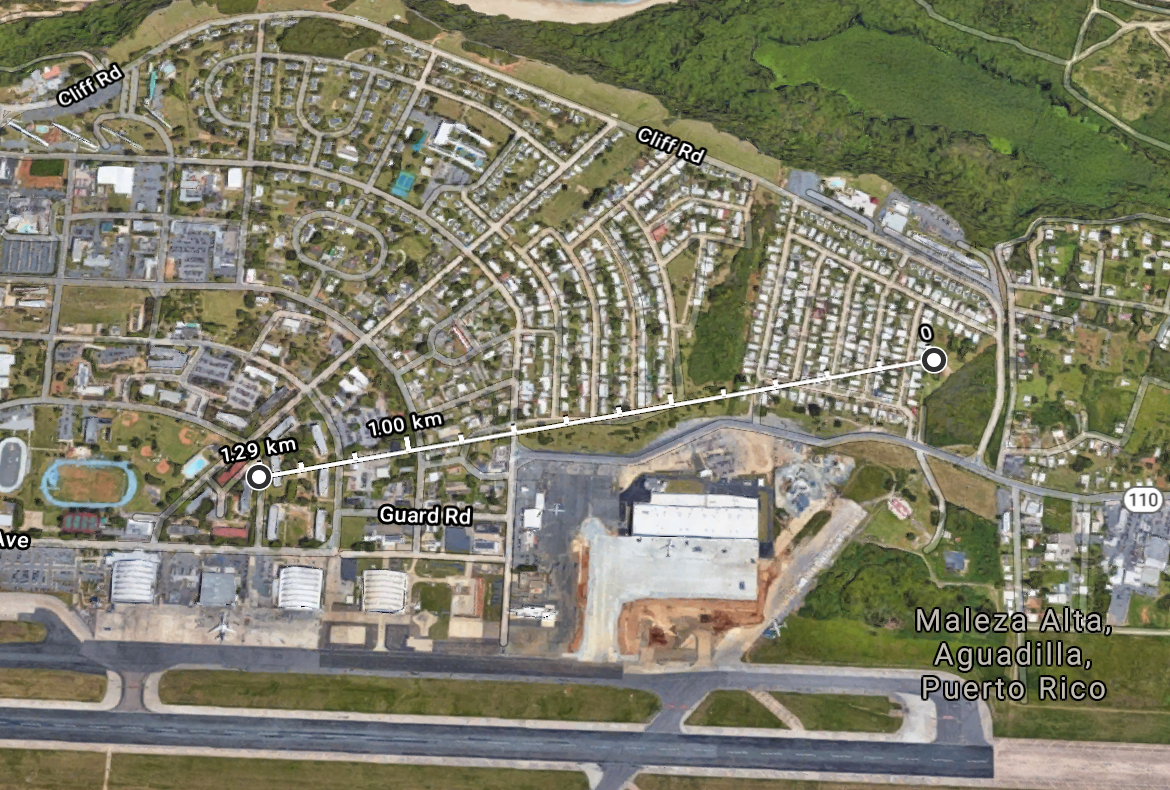Dear Friends: I have finished my counter-rebuttal to Powell's reaction and it will be in about 7 to 10 days published in a blog from V-J Ballester Olmos (Spain) in English and Spanish. I was really sorry to have to write such a "surgical" reply to Powell's apparently "surgical" rebuttal, but my friend Vicente Juan Ballester Olmos asked me to write a comment on SCU reaction to my Aguadila UFO Case Resolution Report.
Since you all deserve it, here I am passing you some excerpts in advance:
The major flaw I see not only in Powell´s rebuttal but also in the initial SCU report, is that from the beginning to the end it is strongly influenced by a couple of wrong assumptions (most probably due to a regrettable optical misinterpretation) about the object´s ability to dive into the ocean and reproduce into two. In this sense I would strongly recommend to the international UFO research community to exercise extreme caution when looking at an IR video, since not all of its frames (if you are lucky, maybe just a few ones) can be interpreted the same way you would interpret an optical video. A good example of infrared imagery’s misinterpretation was the one suffered by CEFAA from Chile: after two years of allegedly “thorough professional study” an IR video was released on its web as a true UFO craft, when it actually was a commercial airplane within the Terminal Control Area of Santiago de Chile.
The Chilean UFO was first explained by the IPACO team as a medium haul twin jet airliner
(http://www.ipaco.fr/ReportChileanNavyCEFAA.pdf) and later as the most probable cause being Iberia 6830 (
https://www.metabunk.org/explained-chilean-navy-ufo-video-aerodynamic-contrails-flight-ib6830.t8306/)
Paradoxically, in order to refute my two-lantern hypothesis, Powell shows a link to another infrared video, showing two foil balloons tied together recorded by Chris Isbert (Black Hot LWIR [8-12μm] FLIR M-SERIES):
Source: https://www.youtube.com/watch?v=gl2EQhNB-So

Frankly, I see almost no difference between Isbert´s video images (top) and the Aguadilla images (bottom), especially where one of the balloons can be seen appearing behind the other in an almost 3D perception on both videos.
Isbert´s valuable video also shows that, on infrared imagery, two or more objects can sometimes appear just as a single one (remember that infrared signatures only exceptionally can show the exact shape of the entire object). The same applies to both infrared videos:

But most important of all, Chris Isbert´s video teaches all of us two important facts:
1) Two Chinese lanterns can, in fact, be released tied together
2) No matter how short or long the thread is, its gentle pull down (weight and air drag) is more than enough to bring both balloons together most of the time. It is a simple physical principle!
If someone is having any doubt about the second point above, please go ahead and try it yourself. It works with any kind of lifting pair of objects, either hot air or helium balloons.

In his rebuttal, Powell (SCU) seems to completely ignore this simple physical principle. The unfortunate proof of this becomes apparent when he writes:
“The second issue with a Chinese lantern relates to a question of why didn’t the IR camera pick up the separation of the lanterns earlier in the three minute video. With two distinct heat sources separated by a minimum of three feet (the width of a lantern) the MX-15 system would have detected the two heat sources for a majority of the video”. Actually the laws of physics are telling us exactly the opposite: the balloons will stick together as a rule, and will became separate, only as an exception.
Putting theories before the facts: Back to SCU’s major misinterpretation of the object(s) ditching into the ocean, I have no doubt in my mind that it was triggered as a direct outcome of his early misinterpretation of the object(s) flying behind trees. SCU clearly put theories before the facts subordinating mathematical calculations to a simple and wrong assumption:
“…we calculated (UFO) speed only at points in the video when the object either moved behind another object… or at the times when the object entered the water”. However, in any scientific work, measurements must be made based on physical parameters or at least on facts, not on theories. By completely assuming that the object passed behind trees (simply not proven) shows us a noteworthy example of putting theory before facts!
Needless to say, a more reasonable way to accurately measure the object should be when it is showing its perfect shape and full size and NOT its degraded shape and minimum size. The latter would be applicable only to an optical video, when the object is enlarged by blurring, in which case a frame with a smaller object would indicate better focusing. But just as I warned above,
never judge every frame in an IR image with the same applied logic as with an optical one.
In its initial report, SCU committed the fatal mistake of generalizing the idea that the object faded as a direct result of being masked by foreground trees and then translated that to a water masking. In their rebuttal they wrote:
“…the only arguments as to why the disappearance of the object is an illusion have revolved around ‘could be’ and ‘could have’”. It is evident that Powell
et al did not study all the clues before jumping into their ill-fated conclusion. As you can notice in the following frame,
the object´s image fades away within the IR sensor´s view even when NOT having any trees in front of it:

To realize how hasty a conclusion SCU made about the object fading due to flying behind trees, I’d urge the readers to review the Aguadilla video from frames 5990 through 6060 so you can judge by yourselves. I bet you will NOT find any trees in front of the object in those frames. The UFO is disappearing due to something else. This should be proof enough to reconsider a completely reexamination of all the frames showing signature degradation before and after the above mentioned ones.
The first lesson this “disappearance-without-trees” teaches us, is this: if the object fades with no trees in front of it, then it could simply indicate that the UFO never flew behind trees during the entire length of the video!
This rare “disappearance” also teaches us a second important lesson for future IR imagery analysis. When for any reason the Aguadilla UFO IR signature fades, it wouldn´t disappear completely to the eye of the camera, but it rather gets “ghostly” dim and white. The same thing happens as from frame 6888 where the entire frame is filled up with background water. The only difference is that in the case of the frames showing only water behind, the ghostly white spot was already zoomed in, which, in turn, made it appear
blurred, larger and with a shade of grey almost matching that of the background water.
This optical effect (and nothing else) is what confused Powell
et al, who, by the way,
never explained how in the world a Thermal IR imager could continue tracking this object underwater, showing exactly the same IR “ghostly” trace as it yielded when it was supposedly “behind” the trees.
Thinking reversal by simple comparison: As stated above, I have no doubt that the idea of a diving UFO was a direct outcome of assuming that the pre-diving “ghostly” image was due to masking by foreground trees. But, as it was proved above, there are several frames where the “ghostly” image shows up even without trees on the foreground. Here I pasted side by side a couple of key frames showing
no substantial difference between both “ghostly” traces of the UFO either on land or on the water. Can you now tell why it gets more confusing in the second frame? You guessed, some particularly spotty areas in the background water show an almost identical hue to that of the ghost signature than in the first case (background land). The additional problem on the second picture (right) is that now the whole frame has been zoomed-in and the ghost signature appears twice as large, more blurred and with less contrast against an already confusing background,
even though both have an almost identical level of signal degradation.

As if all this weren´t enough, for well-established physical reasons current Thermal IR technology is simply not able to track objects under water. This was made very clear even by SCU on page 28 of its report: “
Infrared radiation is easily blocked by water and about one millimeter of water absorbs virtually all of the IR generated by the object.” I couldn´t agree more with that and I am very happy the SCU team mentioned it, because in my paper I mentioned the possibility of the airplane skimming the belly of the cloud deck as a very realistic cause of the temporary fading of the UFO! But then… in order to justify something as incredible as the UFO becoming “ghostly” because it is now diving into the ocean, the SCU was forced to move towards a bizarre “explanation”, by adding
: “When a solid object moves underwater… some of the water it displaces moves towards the surface which then manifests as a moving hump along the surface. Northrop Grumman is aware of this phenomenon as one possible method to detect submarines.”
For what we´ve learned from the two side-by-side pictures above, if in some different parts of the IR video (with completely different backgrounds) two or more frames show identical ghost signals, then it is far more logical to attribute the origin of the degradation to a common cause. In fact, SCU used the “physical mask” single cause argument (trees in the first case and water in the second). By reason, in frames not too distant in time, identical masking effects should be expected to be subject to similar causation. But in this case, water and trees are erroneously considered an identical cause because with identical ghost images on completely different backgrounds, anyone could come up with the pointed questions: where is the “moving hump” of water in the picture where the ghost image is flying over a clearing in the forest? Or, why is the water masking identical to that of the trees? Or even more damaging:
why is the water masking identical to that which is attenuating the object´s image, when it flies with NO trees in the foreground?
About this particular detail Geoff Quick (IPACO) pointed out:
“In the report in question a basic ignorance of IR imagery is manifest. I have never seen an IR target tracked underwater, for good scientific reasons”.
Believe me, I am not only sorry to have to dig into this “surgical” exposé of the SCU rebuttal but also I feel sincerely sorry that people really knowledgeable in their field of technical competence, as Mr. Powell and his colleagues surely are, spent (as they stated in the original SCU report) more than 1000 hours and a year and a half, to conclude that the Aguadilla object was a single extraordinary UFO craft with the ability to fade behind non-existent trees, dive into the ocean, take off back to the air from below the waves and reproduce itself (by ultra-fast cell mitosis perhaps?), when a far more prosaic explanation exists for them: two heart-shaped wedding lanterns carried by the wind and temporarily masked from the airplane flying at an altitude resulting in skimming the belly of the cloud base.
Such a long time analyzing this case might have resulted simply because to the unnecessary lengthy methodology used by SCU. In its rebuttal, SCU emphasizes more than once that
“…the only way to do a proper analysis is by looking at the angular sizes of the object throughout the three minute video.” With such a statement, they seem to completely ignore the fact that for accurate measurements, not necessarily each and every frame is suitable. An IR image may only yield just a few frames positively interpretable (like the ones used by the IPACO team for angular size calculations, in my own report). Smartly choosing the proper frames to exploit different features is a principle that I have learned after years of flight test data processing which involved video and high speed film interpretation. Even in the best optical videos some frames come out motion blurred, out-of-focus blurred and some of them even show a combination of both (which is often the case for many UFO pictures). In an infrared video the non-exploitable frames are far more abundant than even on the case of the worst imaginable optical video! So what is the practical meaning of measuring angular sizes in all the frames?
Surely SCU would have done a much better job by spending some extra time looking for suspect frames where the theory of the IR signature fading due to foreground trees would show some weakness (even though if those frames were, in turn, not quite suitable for proper angular size measurements). Choosing this or that suitable frame for this or that purpose of exploitation is just a matter of good judgment and common sense!
It does not surprise to me that Powell
et al, after writing a 159 page report, including 12 Appendices and more than 140 illustrations (some of them with colorful 3D views), still could not come out with a clear-cut type of explanation. I would suggest to the people of SCU to rethink their data exploitation method and even their writing philosophy, currently seemingly based on a philosophy of
"the more pages, the better report." Data overabundance and a long investigation time must never be thought out as an automatic synonym of quality. The proof of what I am saying is that
after 1000 hours looking at the Aguadilla video, SCU completely missed what frames 5990 through 6060 are showing: a fading UFO flying over open fields, which completely disproves the ill-considered statement about the UFO´s IR signature degrading due to being blocked by foreground trees.
This is my last input on this IFO event. Not only in my view but also, most importantly, in those of my peer reviewers, this case has been solved beyond any reasonable doubt. Now it is the mainframe scientific audience who has to assess what is an acceptable theory of those proposed: two heart-shaped wedding lanterns carried by the wind and temporarily disappearing to the IR eyes of the camera due to an airplane´s altitude skimming the belly of the clouds (Lianza) or an unidentified flying object with the ability to fade behind non-existent trees, dive into the ocean, take off back to the air from below the waves and duplicate itself (Powell
et al).

As I mentioned above, the complete Counter-document will be released in about 7 to 10 days, but at least I hope these excerpts have been proof enough to give you a clear cut opinion on how hasty a conclusion that of Powell et all was.
Cheers.
ruben




